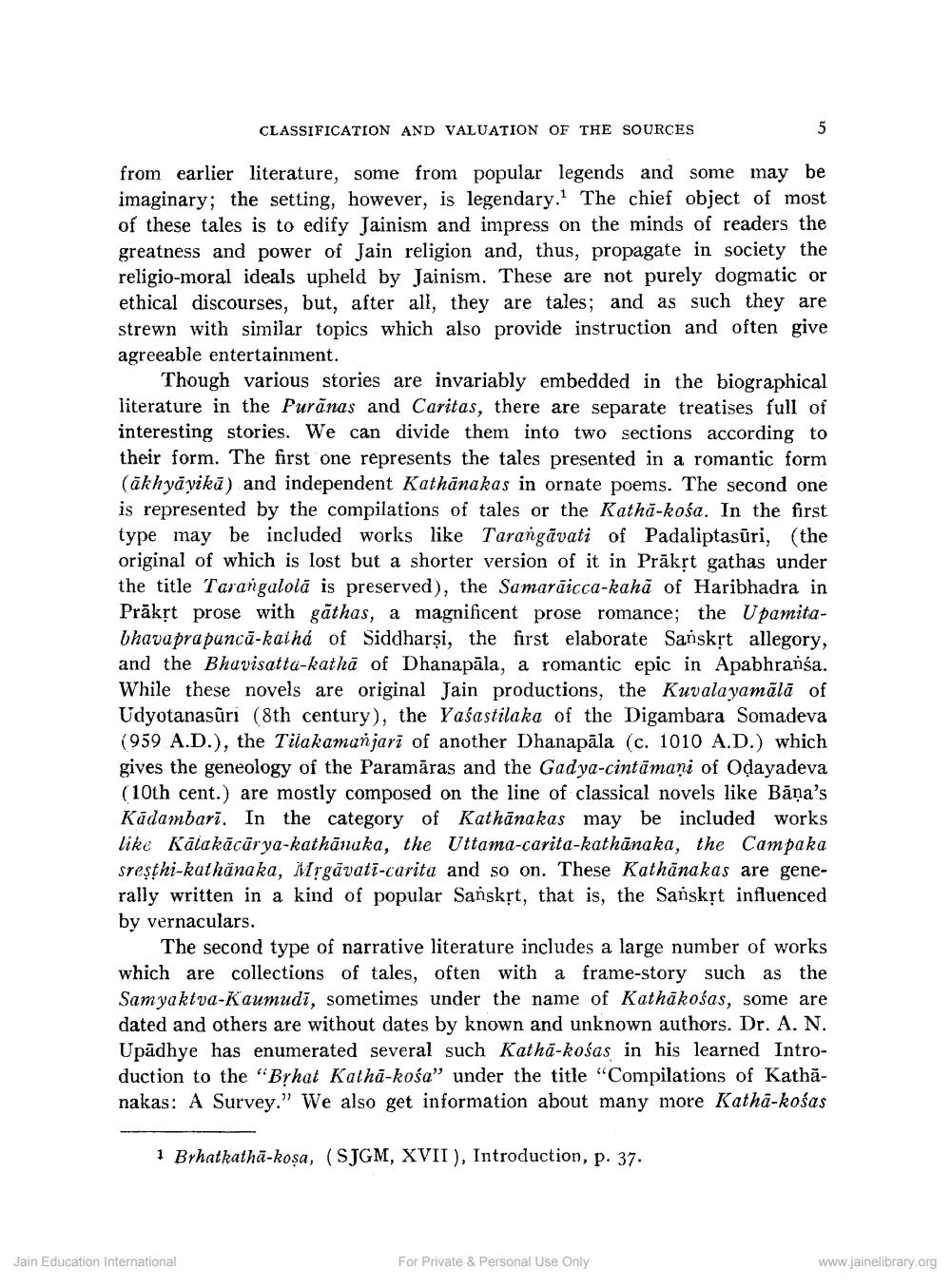________________
CLASSIFICATION AND VALUATION OF THE SOURCES
from earlier literature, some from popular legends and some may be imaginary; the setting, however, is legendary. The chief object of most of these tales is to edify Jainism and impress on the minds of readers the greatness and power of Jain religion and, thus, propagate in society the religio-moral ideals upheld by Jainism. These are not purely dogmatic or ethical discourses, but, after all, they are tales; and as such they are strewn with similar topics which also provide instruction and often give agreeable entertainment.
Though various stories are invariably embedded in the biographical literature in the Purānas and Caritas, there are separate treatises full of interesting stories. We can divide them into two sections according to their form. The first one represents the tales presented in a romantic form (ākhyāyikā) and independent Kathānakas in ornate poems. The second one is represented by the compilations of tales or the Kathā-kośa. In the first type may be included works like Tarangāvati of Padaliptasūri, (the original of which is lost but a shorter version of it in Prākṣt gathas under the title Tarangalola is preserved), the Samarāicca-kahā of Haribhadra in Prākst prose with gãthas, a magnificent prose romance; the Upamitabhava prapancā-kaihá of Siddharşi, the first elaborate Sanskrt allegory, and the Bhavisatta-kathā of Dhanapāla, a romantic epic in Apabhransa. While these novels are original Jain productions, the Kuvalayamālā of Udyotanasūri (8th century), the Yaśastila ka of the Digambara Somadeva (959 A.D.), the Tilakamanjarī of another Dhanapāla (c. 1010 A.D.) which gives the geneology of the Paramāras and the Gadya-cintāmani of Odayadeva (10th cent.) are mostly composed on the line of classical novels like Bāņa's Kādambari. In the category of Kathānakas may be included works like Kālakācārya-kathānuka, the Uttama-carita-kathānaka, the Campaka sresthi-kathänaka, Mrgāvatī-carita and so on. These Kathānakas are generally written in a kind of popular Sanskrt, that is, the Sanskrt influenced by vernaculars.
The second type of narrative literature includes a large number of works which are collections of tales, often with a frame-story such as the Sam yaktva-Kaumudi, sometimes under the name of Kathākošas, some are dated and others are without dates by known and unknown authors. Dr. A. N. Upādhye has enumerated several such Kathā-kośas in his learned Introduction to the "Brhat Kathā-kośa" under the title "Compilations of Kathānakas: A Survey.” We also get information about many more Kathā-kośas
1 Brhatkathā-kosa, (SJGM, XVII), Introduction, p. 37.
Jain Education International
For Private & Personal Use Only
www.jainelibrary.org




